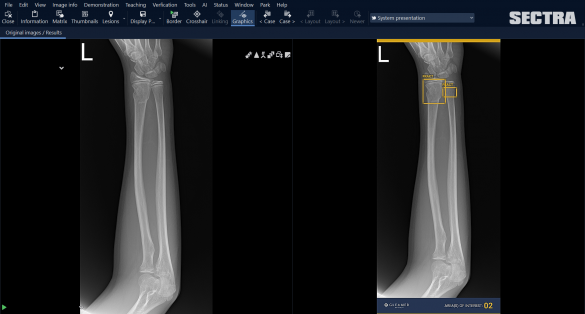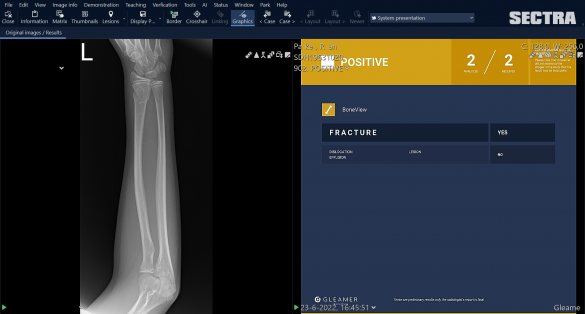The power of seamless integration
Larsen stresses the importance of seamless integration: “It is crucial that the AI application fits well into the current PACS workflow. Image assessment takes place inside the PACS. Precisely because of the [intended] efficiency, it is necessary to remain within the system. After all, you don’t want employees to have to click through several applications in order to make good decisions. The Sectra Amplifier platform helped with this.”
In addition to seamless integration, Kleine points out that “for AI, the hospital does not want all kinds of stand-alone solutions, with their own technical interfaces. Rather, we want one connection: to the PACS. That way, we can easily switch to another AI tool. We want to avoid this becoming a complex technical issue every time.” This in turn would also affect the performance and stability of the workflow, “so we deliberately chose one integration layer.”
The human factor in technological transformation
The human aspect of changing the way we work is at least as important as the technical changes themselves. Kleine and Larsen emphasize that this is primarily a project for healthcare professionals. Working on a multidisciplinary task force gave everyone a voice in the project. “That meant that the radiologist, lab technician, IT specialist, and department manager, all of whom had to guarantee this, were in the task force,” explains Larsen. Also, the structure of market analysis, retrospective research, working in shadow mode, and the pilot itself allowed plenty of space for developing trust within the team.
As Kleine explains, “Our team is made up of highly trained professionals who, understandably, want to be convinced of the validity of an AI application before they are willing to rely on it in their daily work. There are high demands in terms of accuracy, stability, and configuration. If we are too quick in introducing an application that has not yet been fully developed or has not been properly integrated into the PACS, this will only lead to dissatisfaction.”
The evaluation by the lab technicians after the pilot ended showed that a vast majority of them were positive about the use of BoneView and were eager to continue using it. Both during the day shift and in the evening and night shift, BoneView helped in the assessment of scans, with the result that lab technicians did not have to ask the radiologist for an evaluation as often. This, in turn, resulted in fewer disruptions to the radiologist’s work. For the patient, this means getting answers more quickly and less time spent waiting.
Vision for the future and recommendations
Deventer Hospital sees itself primarily as an “early adopter” or “fast follower”. As Kleine explained, “If the AI application is developed within an academic setting, we, as a top clinical hospital, can test its effectiveness in clinical practice and see how further use in smaller, local hospitals can be achieved properly.” After BoneView, the hospital will also be conducting pilots with other AI applications, for example, for detecting pulmonary nodules and assessing cerebral hemorrhages on brain scans. For this, structured integration into the workflow will always be essential.
“Ultimately,” says Kleine, “projects of this kind are always about collaboration between AI and the healthcare professional, with quality and efficiency for the patient at its core.”
In closing, Larsen notes AI’s growing importance in healthcare. “Opinions are divided, however, on how AI will find its place in clinical practice. In healthcare, we have to put the human element first. For this reason, it is good that healthcare professionals have the final say when it comes to application. They are the best judges of whether and how AI should best be used.” With that, it remains important for hospitals to keep the goal for each application in mind, such as working more efficiently, or better patient outcomes.





